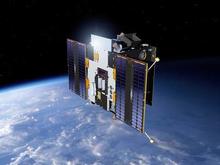news
Submitted on 2017-07-10
Solar observers had a great weekend observing and imaging the Sun, in particular with the rather large and dynamic sunspot group NOAA 2665 dominating the solar disk.
Submitted on 2017-07-10
The PROBA2 team welcomes research proposals for the eighth round of its Guest Investigator program for research based on SWAP and LYRA data analysis by scientists outside the SWAP and LYRA PI-teams.
Submitted on 2017-07-04
The Sun surprized solar observers with a medium class solar flare on 3 July. The associated plasma cloud was not directed to Earth.
Submitted on 2017-06-21
A filament eruption and the emergence of a new sunspot group were the main solar events on 14 June.
Submitted on 2017-05-05
Who will win the 2017 International Space Weather Medals? Nominate your candidates.
Submitted on 2017-04-26
EUI, SPADE and SUVI are just a few of important space weather projects that are currently being tested on ground or in orbit.
Submitted on 2017-04-20
On 18 April, active region NOAA 2651 produced an impressive solar eruption.
Submitted on 2017-04-11
On 28 March, USET solar telescopes captured stunning images of a plane transiting the Sun.
Submitted on 2017-04-05
On 1 April, the Sun produced its first M-class flare since 29 November 2016. It was the first of a series of 7 M-class flares produced by active region NOAA 2644.
Submitted on 2017-03-29
Late on 26 March, the GOES-15 satellite recorded its first C-class flare since 24 February.
Pages
Zircon - This is a contributing Drupal Theme
Design by
WeebPal.











































